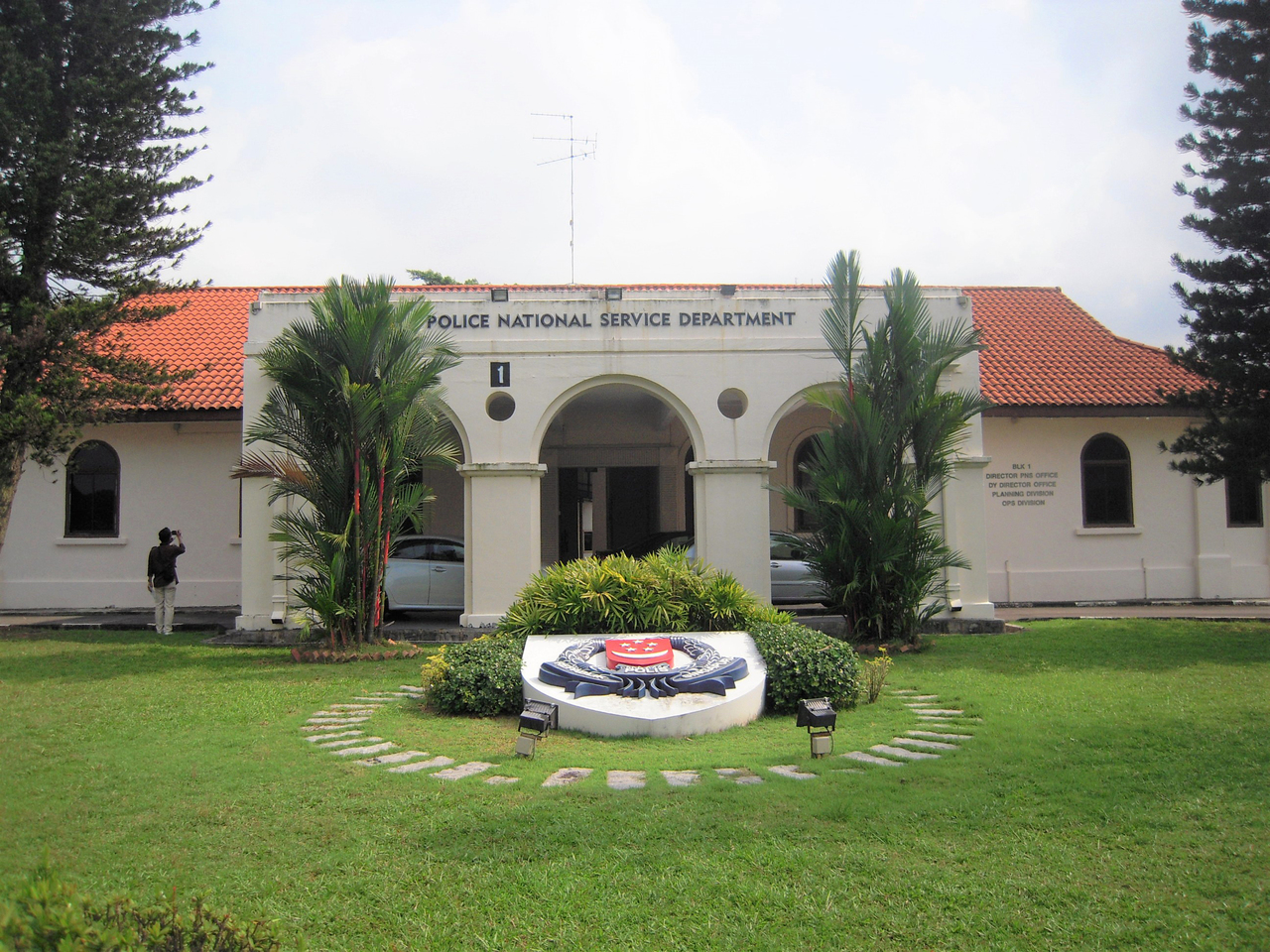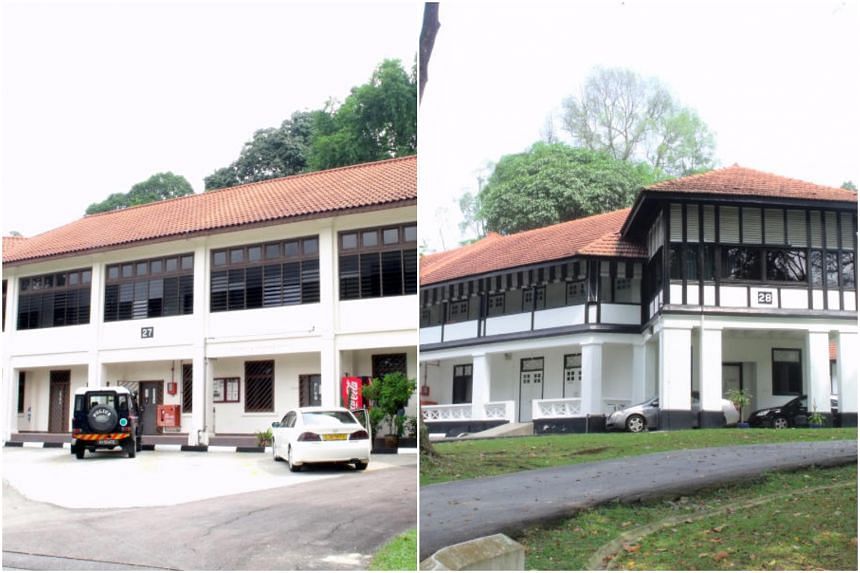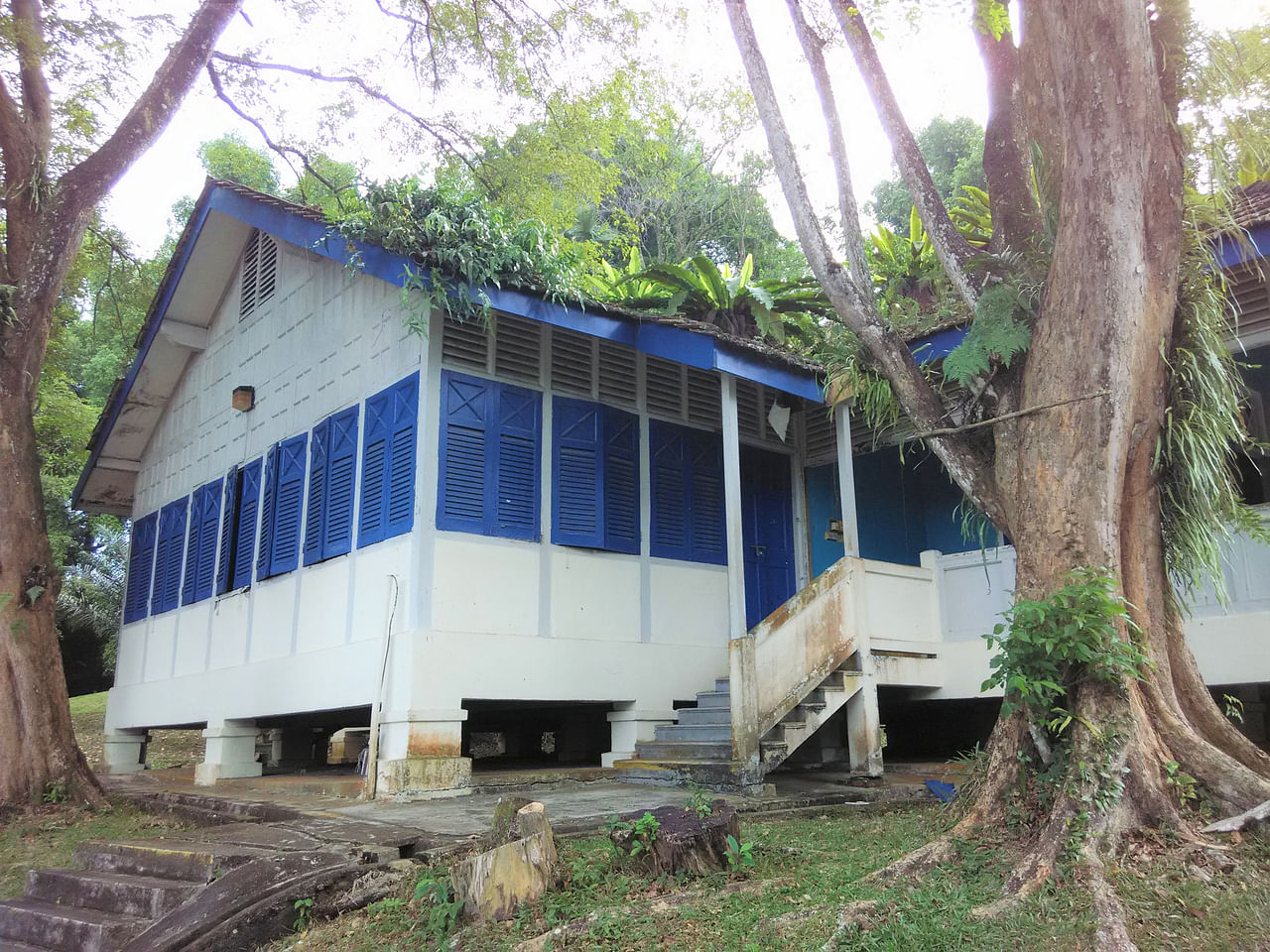Six buildings in and around Old Police Academy to be proposed for conservation
Sign up now: Get ST's newsletters delivered to your inbox

Blocks 1 and 2 were the main administrative buildings at the original main entrance of the academy in Whitley Road.
PHOTO: URA
Follow topic:
SINGAPORE - Six police buildings in and around the Old Police Academy will be proposed for conservation and integrated with future developments in the Mount Pleasant area.
The decision to retain the buildings was made after a first-of-its-kind heritage study was undertaken for the Old Police Academy site, said National Development Minister Desmond Lee on Tuesday (Nov 23).
Four of the retained buildings lie within a future 33ha Housing Board estate on the site, while the other two are just beyond the boundary of the new estate.
"This was the first time we'd done an in-depth heritage study of this scale, which is apt considering the scale of the new housing estate," said Mr Lee during a media briefing.
The former academy, which spans about 25ha, is the site of Singapore's first permanent police training facility, established in 1929. It was operational until 2005, when its functions were relocated to the Home Team Academy in Choa Chu Kang.
"It symbolises the transformation of our police training and education - marking the shift from a wooden and attap temporary site to an institution which has enabled our police to grow and to evolve, from keeping order in a British settlement to preserving the peace and prosperity of an independent nation," said Mr Lee, who added that generations of national servicemen and police cadets have fond memories of their experiences on the academy's grounds.
The large-scale independent heritage study, undertaken by the National University of Singapore's Department of Architecture, compared the significance of the various buildings and spaces in the old academy and assessed how the new housing estate could affect the overall heritage significance of the site. It took place between August 2018 and September 2019.
About 48 buildings and two open spaces were studied in detail, said an Urban Redevelopment Authority (URA) spokesman.
Mr Lee said the development of the new housing estate gave the authorities an opportunity to pilot the large-scale study, and added that lessons learnt from this study will guide future ones, as well as an ongoing effort to develop a heritage impact assessment framework. More details on this framework will be shared when ready.
Mr Lee said the development of the new housing estate gave the authorities an opportunity to pilot the large-scale study, and added that lessons learnt from this study will guide future ones, as well as an ongoing effort to develop a heritage impact assessment framework. More details on this framework will be shared when ready.
The study found that nine buildings and areas within the old academy were considered the most significant in the history of Singapore's police force. They are Blocks 1, 2, 27, 28 and 153; an old drill shed; a swimming pool; the parade square; and the recreation field.
"This is due to their strong organisational and historical associations, architectural and aesthetic values, as well as deep communal associations with the police in Singapore and Malaysia," said the HDB, URA and Singapore Land Authority in a joint statement.
Within the future housing estate's boundary, Blocks 1, 2, 27 and 28 will be retained and proposed for conservation. They will be adapted for new uses.
The four blocks were built between 1926 and 1930 as part of the original police academy, and their geographical distribution reflects how the buildings had been laid out according to the terrain - administrative and training functions were located on flat, lower ground, while accommodation and medical facilities were placed on higher and hillier ground.
In particular, Blocks 1 and 2 were the main administrative buildings situated at the original main entrance of the academy in Whitley Road.
They were physical, visual and symbolic landmarks for trainees, providing the backdrop for parade ground events and graduation photo shoots.

As for Blocks 27 and 28, the pair of colonial-style bungalows were used as senior officers' accommodation.
Each bungalow has a unique butterfly-shaped semi-detached layout with full-length verandahs, and were designed to suit the tropical weather while retaining English-style design roots.
Situated on high ground, they overlook the academy and are visible from the Pan-Island Expressway.

A part of the parade square will be retained as an open space within the new housing estate.
Meanwhile, two buildings outside the housing estate's boundary will also be proposed for conservation.
Construction of Block 13 began in 1928 and it was used as a clinic and hospital ward. It also served as the primary entry point to the medical centre.
Built in the style of plantation houses, the building was designed with surrounding verandahs and large timber shutters for natural ventilation.

mnmount23-ol/24 - Block 13 is a unique building in the Old Police Academy which began construction in 1928 as a clinic and hospital ward. (credited to URA)
PHOTO: URA
Also outside the boundary is Block 153, which is also known as the Senior Police Officers' Mess.
This building - built in 1931 - is deemed the foundation of the force's esprit de corps, having hosted many formal gatherings, official functions and events, such as festive celebrations, weddings, and networking and socialisation events for serving and retired officers.

Built in 1931, 153 Mount Pleasant Road is an art deco bungalow, known as the Senior Police Officers’ Mess.
PHOTO: URA
For buildings and spaces that cannot be retained in their entirety, Mr Lee said HDB will explore various strategies to retain and showcase their heritage significance in the new housing estate's design.
The heritage study's full report has been published on HDB's website, and is open for public feedback until Dec 21.
Asked why the heritage study was not called prior to the commencement of works for the Mount Pleasant MRT station in 2015, a URA spokesman said an internal assessment had taken place, to assess the area affected by MRT construction, occupied by six buildings and ancillary structures.
These were assessed to be of low heritage significance and demolished in 2015.
"Subsequently, given the scale of the Old Police Academy site and its deep history, we decided to carry out a more detailed heritage study to supplement our internal assessment," said the spokesman, who added that a study on a similar scale for the former Turf Club in Bukit Timah has also been called.
Asked why the heritage study was not called prior to the commencement of works for the Mount Pleasant MRT station in 2015, a URA spokesman said an internal assessment had taken place, to assess the area affected by MRT construction, occupied by six buildings and ancillary structures.
These were assessed to be of low heritage significance and demolished in 2015.
"Subsequently, given the scale of the Old Police Academy site and its deep history, we decided to carry out a more detailed heritage study to supplement our internal assessment," said the spokesman, who added that a study on a similar scale for the former Turf Club in Bukit Timah has also been called.
Mr Lee said that engagement on future plans for the housing estate will include a new work group comprising members of the police fraternity, the heritage community and government agencies.
The work group will be chaired by Minister of State for Home Affairs and National Development Muhammad Faishal Ibrahim, and will collaborate to develop plans to retain and showcase the unique heritage identity of the area within the design of the new HDB estate.


